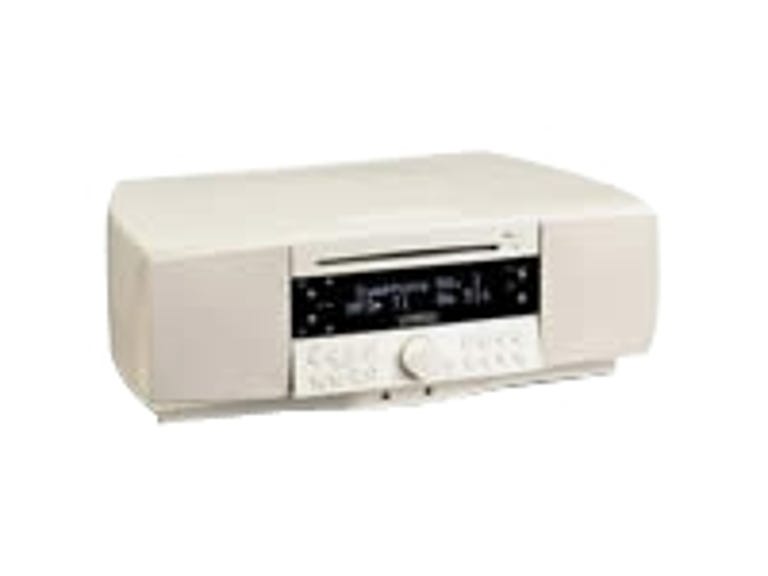 Why You Can Trust CNET
Why You Can Trust CNET Cambridge SoundWorks Radio CD 740 review: Cambridge SoundWorks Radio CD 740
Cambridge SoundWorks Radio CD 740
Editor's note: We have changed the rating in this review to reflect recent changes in our rating scale. Click here to find out more.
The Good
Table radio/CD player; stereo speakers; built-in powered woofer; excellent AM and FM reception; plays MP3 CDs; liberal connectivity options; 45-day risk-free home trial.
The Bad
Pricey.
The Bottom Line
Cambridge's feature-studded table radio now plays CDs.
We're big fans of Cambridge SoundWorks' overachieving Radio 730. It's far and away the best-built, best-sounding table radio we've ever heard, and we've tried all the serious contenders. The only thing the 730 is missing is a built-in CD player, but thankfully, you can now find that in the step-up Radio CD 740, which is listed at $400.
Available in black or ivory, the 740 is a near twin of its radio-only predecessor, measuring 14 inches wide, 5 inches high, and 10 inches deep. The unit's 12-pound heft inspires confidence.
Inserting a disc into the 740's motorized, front-loading slot calls up information on the 32-character display. For CDs, you see the tracks, their times, and any available CD Text data. With MP3 CD-Rs, the names of folders and files appear. As for the radio, programming AM and FM station presets is easy. An automatic dimmer reduces the screen brightness in dark rooms and maintains good legibility in bright light. The display even shows Radio Data Service information: real-time text such as the song's title, the artist's name, and the station's call letters.
Two quality speakers and a built-in woofer, all three fed by separate amplifier channels, provide stereo sound. The 740 is magnetically shielded, so you can place it near a TV or a computer monitor.
The 740's alarm clock, which lets you easily program two setups, can wake you up with beeping, your favorite CD or MP3 track, or the radio. A 9-volt battery gives the alarm enough backup power to sail through a blackout up to 48 hours long. The credit card-style remote is a model of efficient design; it's highly legible and not crowded with a lot of useless buttons.
The Stereo selector lets you choose between Stereo, Mono, and Wide. We really like the Wide setting because it opens up the sound. The bass, treble, and loudness controls let you fine-tune the tonal balance. We were surprised at just how far we could crank up the bass before the 740 emitted any buzzes or rattles.
The radio's FM reception and sound quality were excellent, and AM results were also above average. Of course, CD audio was even better. The 740's remarkably rich sonics and generous volume capabilities compare to those of the better mini/shelf systems.
Normally, we wouldn't have much to say about a table radio's connectivity, but the 740 is surprisingly well endowed. The AM and FM antenna inputs accept jacks instead of bare wire leads, which are fussier and harder to attach. The 740 has three 1/8-inch stereo minijack inputs: the one on the front handles quick hookups, leaving more-permanent connections to its two back-panel counterparts, one of which can combine a line-out signal (from your computer, for example) with the radio's sound or feed a recording device such as a CD burner. Oh, there's also a front-panel headphone output.
Cambridge sells the 740 direct with an in-home 45-day trial period, so you can check out the radio for yourself. Chances are you won't return it.


